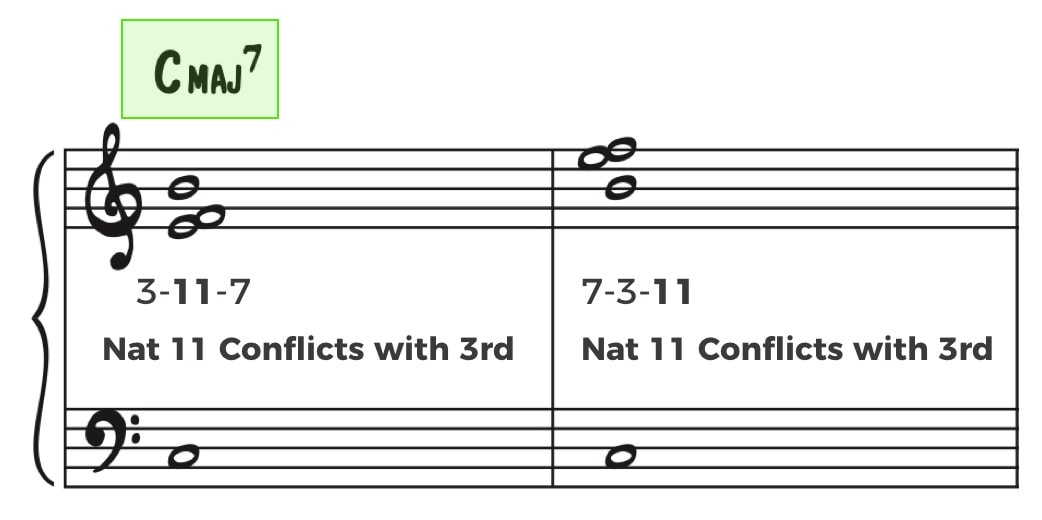Tired of playing the same old chords on your guitar? Ready to shake things up and unleash your inner rock god? Look no further, because we’ve got the lowdown on mastering some killer new chord shapes for advanced players. Get ready to blow minds and melt faces with these fresh and funky fretboard moves. It’s time to take your guitar game to the next level, so grab your axe and let’s dive in! Chords“>
Chords“>
Contents
- 1 Exploring the Realm of Extended Chords
- 2 Incorporating Jazz Chords into Your Playing
- 3 Transitioning to Altered Dominant Chords
- 4 Mastering Chord Voicings and Inversions
- 5 The Art of Fingerstyle for Chord Melody
- 6 Techniques for Smooth Chord Transitions
- 7 Exploring Modal Chord Progressions for Creativity
- 8 FAQs
- 9 Rock On!
Exploring the Realm of Extended Chords
Ready to dive deep into the enchanting realm of extended chords? Get ready to add some extra spice to your music with these complex and intriguing combinations of notes.
Forget about your everyday major and minor chords – extended chords are here to take your compositions to the next level. Treat yourself to the rich, full sound of a seventh chord, or push the boundaries even further with ninth, eleventh, and thirteenth chords. The possibilities are endless!
Feeling overwhelmed by all these new chords? Don’t worry - with a little practice and a lot of patience, you’ll soon be weaving these colorful tones into your music like a seasoned pro. Embrace the challenge and let your creativity run wild.
So why stick to the same old chords when you can venture into the unknown world of extended chords? Take a leap of faith, experiment with different combinations, and let your music soar to new heights. Who knows? You might just discover a sound that’s uniquely yours.
 Jazz Chords into Your Playing”>
Jazz Chords into Your Playing”>
Incorporating Jazz Chords into Your Playing
So, you want to take your playing to the next level by incorporating some jazzy chords, huh? Well, get ready to spice up your music with some smooth and sophisticated sounds!
First things first, let’s talk about those fancy jazz chords. Say goodbye to boring old major and minor chords, and say hello to extended chords like 7th, 9th, and 11th chords. These babies add a whole new dimension to your playing and will make you sound like a true jazz aficionado.
Now, let’s talk about some common jazz chord progressions to get you started. Jazz music loves its ii-V-I progressions, so get comfortable with these bad boys. Mix in some diminished chords for that extra spicy flavor, and you’ll be well on your way to jazz greatness.
Don’t be afraid to experiment with different voicings and inversions of jazz chords. Play around with different combinations and find what sounds best to you. The beauty of jazz is that there are no rules, so let your creativity run wild!
Transitioning to Altered Dominant Chords
So you want to spice up your chord progressions by ? Well, look no further because we’ve got you covered! Altered dominant chords are like the flamboyant cousin of regular dominant chords - they add that extra oomph to your music that will leave your listeners begging for more.
Picture this: you’re playing a standard blues progression and suddenly, you throw in an altered dominant chord. BAM! You’ve just taken your audience on a rollercoaster ride of emotions. It’s like adding hot sauce to a bland dish – instant flavor explosion!
But beware, my friend, with great power comes great responsibility. Altered dominant chords can be a bit tricky to handle, like a mischievous puppy who just won’t sit still. But fear not! With a little practice and some creative thinking, you’ll be adding altered dominant chords to your songs like a pro in no time.
So strap in, grab your instrument of choice, and get ready to take your music to the next level with altered dominant chords. Your audience will thank you, your bandmates will worship you, and you’ll feel like a musical genius. Let’s dive in and explore the wild and wonderful world of altered dominant chords together!

Mastering Chord Voicings and Inversions
So you think you’ve got what it takes to master chord voicings and inversions, huh? Well, strap in, because we’re about to take you on a wild ride through the world of musical harmony.
First things first, let’s talk about chord voicings. You know those fancy ways you can play a chord on the guitar or piano? Yeah, those are called voicings. And mastering them is like unlocking a secret code to creating beautiful, complex sounds that will make you the envy of every musician in the room.
But wait, there’s more! Inversions are like the ninja moves of the chord world. They’re all about rearranging the notes of a chord to give it a fresh, unique sound. And let me tell you, there’s nothing quite as satisfying as pulling off a killer chord inversion that leaves everyone in awe.
So buckle up, because by the time you’re done with this lesson, you’ll be a chord voicing and inversion master, ready to take on the music world one mind-blowing chord at a time. Get ready to wow your friends, impress your audiences, and most importantly, have a heck of a lot of fun making music.
 Fingerstyle for Chord Melody”>
Fingerstyle for Chord Melody”>
The Art of Fingerstyle for Chord Melody
Have you ever wanted to serenade your friends and family with your mad guitar skills, but couldn’t quite figure out how to make those chords sing? Well, fret no more (pun intended), because I’m here to teach you !
With fingerstyle guitar playing, you can create beautiful, complex melodies by plucking individual strings with your fingers instead of strumming with a pick. It’s like playing multiple instruments at once, but without the hassle of lugging around a drum kit and a saxophone.
Here are a few tips to get you started on your fingerstyle journey:
- Practice makes perfect, so don’t get discouraged if you don’t sound like Tommy Emmanuel right away. He’s had a bit of a head start.
- Experiment with different fingerpicking patterns to find the one that suits your style. Who knew your pinky finger could be so versatile?
- Don’t be afraid to incorporate a bit of percussive tapping or harmonics into your playing. Just make sure your guitar can handle the abuse.
So grab your guitar, tune up those strings, and get ready to wow your audience with your newfound chord melody skills. Who knows, you might even become the next fingerstyle guitar sensation!
Techniques for Smooth Chord Transitions
So you’ve been practicing your guitar chords for a while now, but those transitions are still as smooth as a gravel road? Fear not, fellow musician, for I have some tips and tricks to help you glide effortlessly from one chord to the next like a ninja on ice skates.
First off, make sure your fingers are properly positioned on the fretboard. **A common mistake is to try to play all chords with a death grip,** but remember, a light touch is key. Allow your fingers to dance delicately across the strings, like a ballerina pirouetting on a tightrope.
Next, practice transitioning between chords slowly at first. **Rome wasn’t built in a day, and neither will your chord transitions be.** Start by playing each chord individually and then gradually speed up as you become more comfortable. Before you know it, you’ll be switching between chords with the ease of a magician pulling a rabbit out of a hat.
Another helpful technique is to pay attention to the movement of your wrist and arm. **Keep your movements fluid and controlled,** like a tai chi master gracefully gliding through a sequence of movements. This will not only help with your transitions but also prevent any unnecessary strain on your muscles.
Exploring Modal Chord Progressions for Creativity
Modal chord progressions are like a magical mystery tour for your ears. By exploring different modes, you can uncover new sounds and unleash your creativity in ways you never thought possible. Forget about your standard major and minor chords - it’s time to dive into the world of Dorian, Phrygian, Mixolydian, and more!
Imagine painting with a palette of colors you’ve never used before - that’s what modal chord progressions can do for your music. Instead of sticking to the same old tired progressions, why not shake things up with a spicy Phrygian riff or a dreamy Lydian sequence? Your songs will thank you for it, trust me.
With modal chord progressions, the possibilities are endless. You can create moods ranging from mysterious and haunting to bright and jubilant, all with just a few simple changes to your chords. Experiment with different combinations and see where your musical journey takes you – who knows, you might just stumble upon your next big hit!
So don’t be afraid to break out of your musical comfort zone and try something new. Dive into the world of modal chord progressions and let your creativity run wild. Who knows, you might just surprise yourself with what you come up with!
FAQs
Why should advanced guitar players learn new chord shapes?
Well, if you’re still playing the same old chords, your music might start to sound a little stale. Learning new chord shapes can help you spice up your playing and add some unexpected twists to your songs.
Are these new chord shapes difficult to learn?
They might take a bit of practice, but with dedication and some patience, you’ll have them down in no time. Plus, once you’ve mastered these new shapes, you’ll be able to impress all your friends with your fancy chord knowledge.
How will learning new chord shapes improve my playing?
By learning new chord shapes, you’ll expand your musical repertoire and be able to play a wider variety of songs. Plus, experimenting with new shapes can help you develop your own unique style and sound.
Can I incorporate these new chord shapes into my songwriting?
Absolutely! Using new chord shapes can help you break out of old habits and come up with fresh ideas for your songs. Who knows, you might even stumble upon a new chord progression that becomes the next big hit!
What are some tips for mastering these new chord shapes?
Practice, practice, practice! Take your time and really focus on getting each shape right. And don’t be afraid to experiment with different finger placements and strumming patterns to see what sounds best to you.
Rock On!
Whether you’re shredding at lightning speed or strumming along to your favorite ballads, mastering new guitar chord shapes is essential for any advanced player. So grab your guitar, practice those tricky finger placements, and rock on like never before! Who knows, you might just be the next guitar hero in town. Keep jamming, keep practicing, and keep pushing yourself to new heights. The only way is up!



